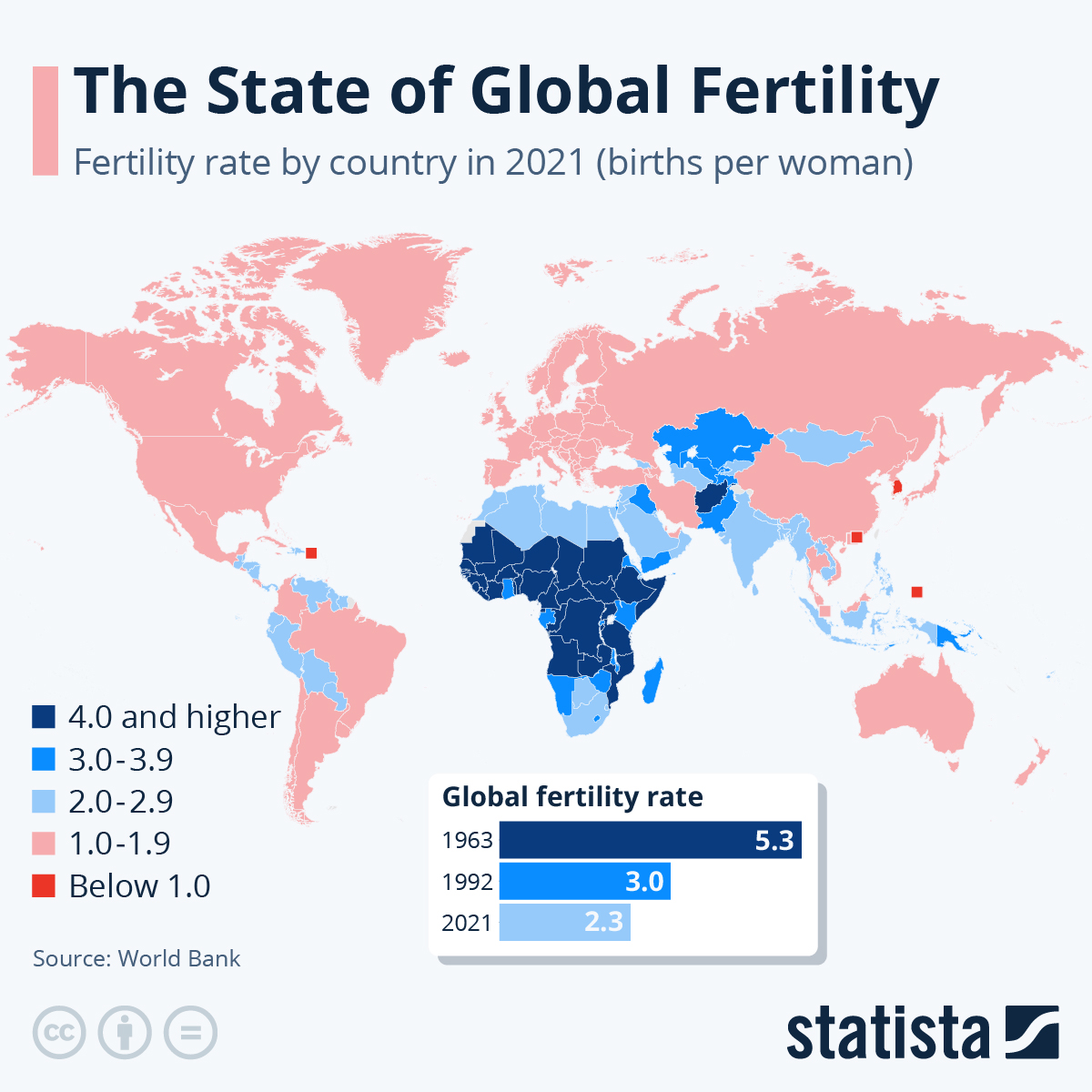South Korea, together with Hong Kong, Macau and Puerto Rico, is one of only a few places in the world with a fertility rate below 1, data by the World Bank shows, Statista reports.
In Japan, another Asian country known to struggle with low birth rates, average births per woman remained at 1.2 in 2023. This places the country among the more than 90 in the world where populations are not growing independent of immigration. Also in this group are many countries from Europe, the Americas and Southeast Asia. Most of the countries losing fertility are better developed and reasons for the trend include greater access to contraception and more women being educated and heading to work.
The story is different in the developing world where higher rates of fertility are fuelling continued global population growth. Somalia, Chad, Niger and the Democratic Republic of the Congo had a fertility rates of 6.1 in 2023, the highest in the world, followed by the Central African Republic and Mali. Out of the 31 countries in the world where women had 4 or more children on average, 29 were in Africa that year.
On average, women in 1963 were having 5.3 children in their lifetime and by 2023, that had more than halved to 2.2. During the same period, the global population rose by around 150% from 3.2bn to 8.1bn. The fact that populations kept (and keep) growing despite falling global fertility is tied to longer life expectancy and lower childhood mortality. The UN expects global fertility to reach the minimum replacement level of 2.1 by the middle of the century while global population is expected to start falling towards the end of it.
 You will find more infographics at Statista
You will find more infographics at Statista
Data

The countries losing population fastest – Statista
In 2023, Ukraine was the country losing population the fastest as the Russian invasion is driving its citizens from their homeland in scores.

Uzbekistan’s 1Q gold exports jump to $3.6bn as world prices hit record levels
Billion-dollar surge recorded. Shipments of precious metal account for 44% of country's overall export volume.

Russia’s unemployment stays at record 2.4% low in 2M25
Russia’s unemployment rate remained at a historic post-Soviet low of 2.4% in the first two months of 2025, according to Finance Minister Anton Siluanov, who credited job creation and rising incomes for the improvement in labour market conditions.

Istanbul-listed Koc makes Top 20 for first time in Global 500 Family Business ranking
Claims 19th position with $68bn in revenues.




